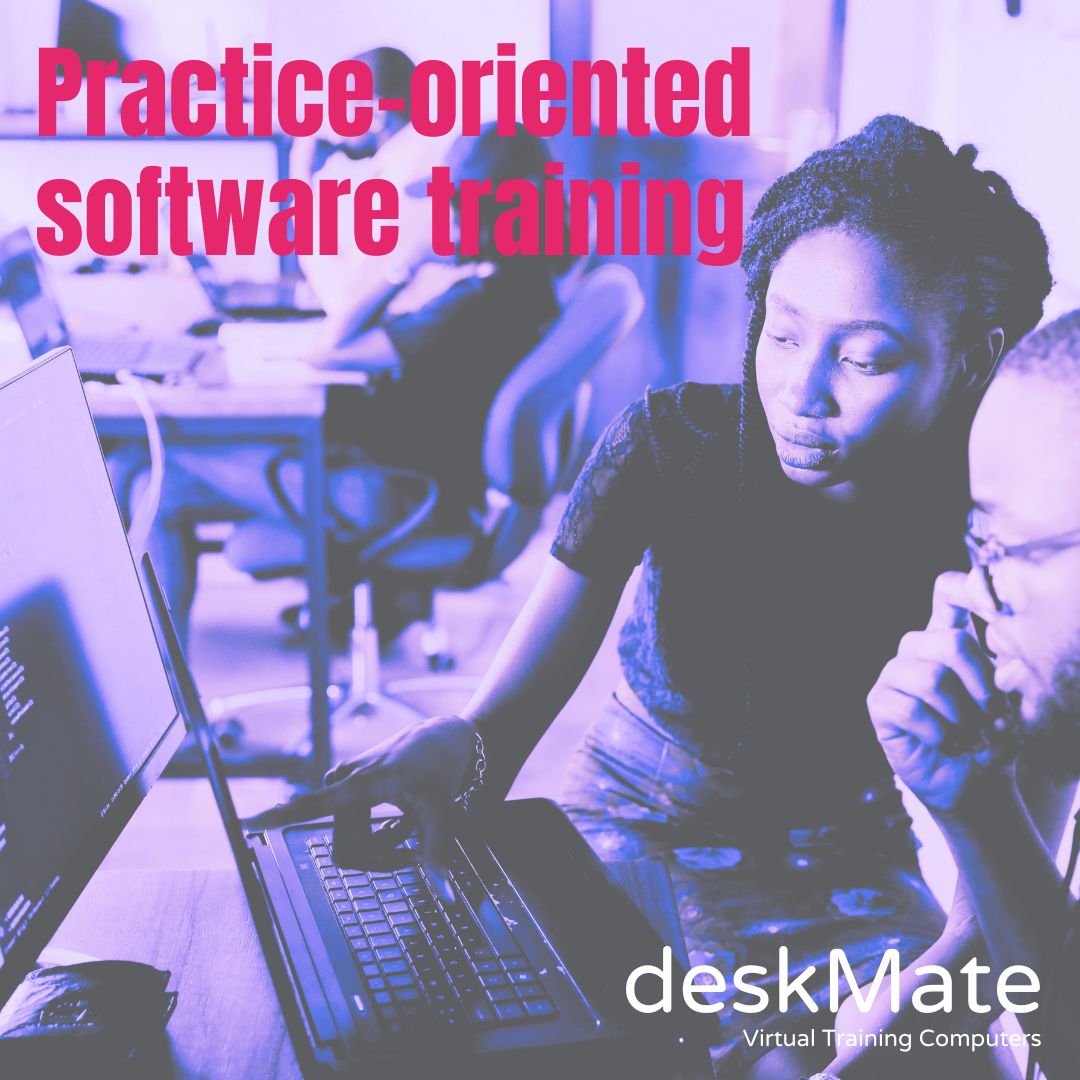SUCCESS THROUGH PRACTICAL SOFTWARE TRAINING
Practice-oriented software training: The key to more successful training
Dear Trainer,
Have you ever wondered why some software training courses are more effective than others? That in addition to your skills, the way in which you are trained also has a significant impact on your learning success.
Studies show that exercise-intensive training methods significantly improve learning outcomes. Compared to purely theoretical lessons, participants benefit from practical exercises in many ways.
Studies prove effectiveness
1. Better understanding through active learning: A study from Carnegie Mellon University found that students who actively learn through practical exercises can improve their learning outcomes by up to 16% compared to those who were taught solely through lectures and theoretical content. Active learning not only promotes understanding, but also the application of what has been learned in real-life situations.
2. increased retention and applicability: According to a study by Harvard University learners who have been taught through practical exercises retain up to 75% of the subject matter over longer periods of time. This is because practice-oriented exercises reinforce what has been learned and help learners to better internalize and apply the knowledge.
3. immediate feedback and customization: Practical exercises allow participants to receive immediate feedback and correct their mistakes straight away. This accelerates the learning process and increases the learning curve, as problems can be addressed and solved immediately. A study by the National Training Laboratories showed that learning by practicing has an average retention rate of 75%, while pure lectures only achieve a rate of 5%.
As a software trainer, you have the responsibility to prepare your participants for their professional challenges in the best possible way. By making our lessons practice-oriented and focusing on active exercises, you can not only improve understanding and retention, but also increase the motivation and commitment of your learners.
Let's work together to ensure that our training courses not only impart theoretical knowledge, but also make our participants fit for practice!
- Carnegie Mellon University:
- Deslauriers, L., Schelew, E., & Wieman, C. (2011). Improved Learning in a Large-Enrollment Physics Class. Science, 332(6031), 862-864. DOI: 10.1126/science.1201783.
- Harvard University:
- Freeman, S., Eddy, S. L., McDonough, M., Smith, M. K., Okoroafor, N., Jordt, H., & Wenderoth, M. P. (2014). Active learning increases student performance in science, engineering, and mathematics. Proceedings of the National Academy of Sciences, 111(23), 8410-8415. DOI: 10.1073/pnas.1319030111.
- National Training Laboratories:
- National Training Laboratories Institute for Applied Behavioral Science (1998). Learning Pyramid.





